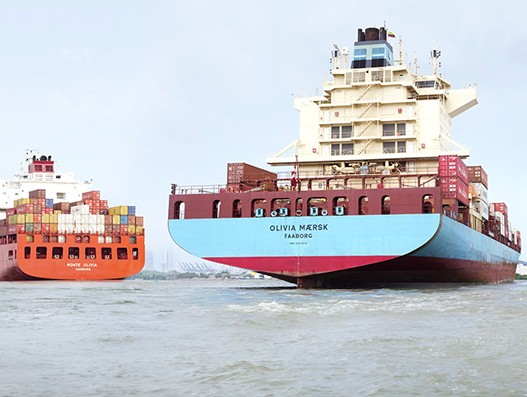
Maersk clocks $1 billion profit in container shipping business in 2017
February 13, 2018: Danish shipping company, A.P. Moller – Maersk witnessed a 13 percent jump in revenues during 2017, which was primarily driven by the rise in earnings on its container shipping business. The company’s underlying profit stood at $356 million, compared to a loss of $496 million during 2016. Its transport and logistics business […]

February 13, 2018: Danish shipping company, A.P. Moller – Maersk witnessed a 13 percent jump in revenues during 2017, which was primarily driven by the rise in earnings on its container shipping business.
The company’s underlying profit stood at $356 million, compared to a loss of $496 million during 2016. Its transport and logistics business clocked profit of $1 billion.
“Last year was quite unusual for us as we suffered a massive jolt from a cyber-attack in Q3, and faced operational challenges in few hubs. However, we succeeded in growing our revenues by 13 percent, improved cash flows and increased our underlying profits, compared to the slump in 2016. Our financial result in 2017 points toward the need for further improvement. On the other hand, when we look at the strategic business transformation, our progress across 2017 was satisfactory. We undertook steps towards integrating of our container shipping, ports and logistics businesses, while we embarked on the digital transformation. Similarly, we roped in new owners for a part of our energy-related business units,” said Soren Skou, CEO of A.P. Moller - Maersk.
During 2017, Maersk entered into several M&A transactions worth $14 billion. It includes acquisition of Hamburg Sud, agreement to sell Maersk Oil, sale of Maersk Tankers and Mercosul and sale of the remaining 19 percent stakes in the Dansk Supermarked Group. The structural solutions for Maersk Drilling and Maersk Supply Service is expected to be completed by the end of 2018.
Maersk Line and Damco were severely impacted by a cyber-attack during Q3. However, Maersk Line soon made improvements and registered a strong growth in volumes by the end of 2017. Stronger synergies between Maersk Line and APM Terminals generated around $0.1 billion, despite negative impact from the cyber-attack and some operational challenges.
The acquisition of Hamburg Sud was key to Maersk’s growth. The two carriers currently hold 19 percent of the global capacity market share, which is over four million TEUs in container volume.
“After a successful acquisition of Hamburg Sud, the integration is off to a good start as both carriers witnessed growth in volumes during the first month. A smooth integration of Hamburg Sud is the top priority for us during 2018,” said Skou.
During 2017, Maersk made significant progress in the digital transformation of its core business by moving its customer transactions online, and digitised its operations.
A series of digital initiatives were initiated during the year, including digitisation of customer-centric processes and services to enable new product offerings. It includes the launch of Twill — a digital freight forwarder and Remote Container Management (RCM) for reefer customers, partnership with Microsoft for cloud computing and digital product development, and a joint-venture with IBM to ease the trade process by digitising the exchange of trade-related information.

